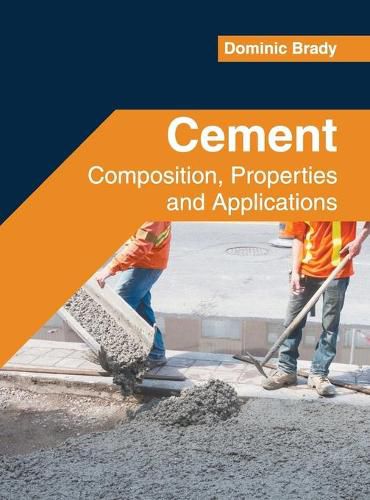Readings Newsletter
Become a Readings Member to make your shopping experience even easier.
Sign in or sign up for free!
You’re not far away from qualifying for FREE standard shipping within Australia
You’ve qualified for FREE standard shipping within Australia
The cart is loading…






Cement is a substance that is used for construction to set and harden other materials and to bind them together. It is usually mixed with aggregate to produce mortar for masonry and with gravel and sand to produce concrete. The two main forms of cement are geopolymer cement and portland cement. Geopolymer cement is made up of the mixture of water-soluble alkali metal silicates along with aluminosilicate mineral powders like metakaolin and fly ash. Portland cement is produced by heating limestone with other materials in a process known as calcination. On the basis of their hardening and setting mechanisms, the cement materials are classified into two categories - hydraulic and non-hydraulic cements. The setting and hardening of hydraulic cements include hydration reactions and require water. While, non-hydraulic cements are able to directly set under air as they react with carbon dioxide in the air. The topics included in this book on cement are of utmost significance and bound to provide incredible insights to readers. It is a valuable compilation of topics, ranging from the basic to the most complex advancements in the applications of cement. It will provide comprehensive knowledge to the readers.
$9.00 standard shipping within Australia
FREE standard shipping within Australia for orders over $100.00
Express & International shipping calculated at checkout
Cement is a substance that is used for construction to set and harden other materials and to bind them together. It is usually mixed with aggregate to produce mortar for masonry and with gravel and sand to produce concrete. The two main forms of cement are geopolymer cement and portland cement. Geopolymer cement is made up of the mixture of water-soluble alkali metal silicates along with aluminosilicate mineral powders like metakaolin and fly ash. Portland cement is produced by heating limestone with other materials in a process known as calcination. On the basis of their hardening and setting mechanisms, the cement materials are classified into two categories - hydraulic and non-hydraulic cements. The setting and hardening of hydraulic cements include hydration reactions and require water. While, non-hydraulic cements are able to directly set under air as they react with carbon dioxide in the air. The topics included in this book on cement are of utmost significance and bound to provide incredible insights to readers. It is a valuable compilation of topics, ranging from the basic to the most complex advancements in the applications of cement. It will provide comprehensive knowledge to the readers.